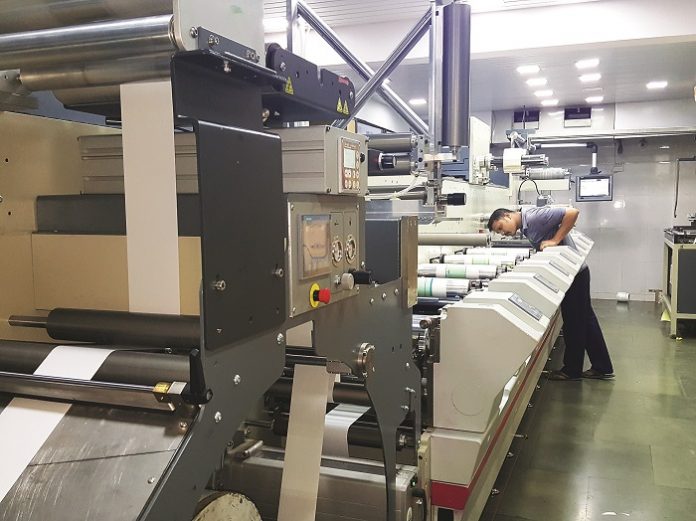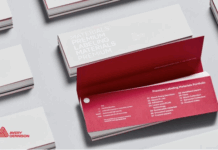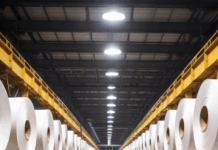With an annual average growth rate of over 30%, Vasai-based Duralabel Graphics has had a great run in the past few years. The 8-color Mark Andy 2200 press that the company was employing since 2011 was not sufficient to meet the increasing workload. It was time to enhance the print capacity. In early 2016, Ravi Patnaik, owner of Duralabel decided to invest in a Bobst M4 8-color flexo press. The press was supplied by Reifenhauser India and was installed in April.n
“As a long time Mark Andy user I had considered another press from their stable but there were few features in Bobst M4 which finally clinched the deal for me. Firstly, the size of M4 was more compact compared with any similarly configured Mark Andy press. In a place like Mumbai where space comes at a premium it was an important factor. Additionally, the makeready time for Bobst M4 is much faster,” says Patnaik.
The performance of the M4 during the four months that it has been in employment at Duralabel, according to Patnaik, has been satisfactory. “We are running the press at around 60 to 70 metres a minute,” he says. The M4 has a maximum speed of 180 metres a minute and maximum web width of 370 mm.
One issue he has with the press is that when the press is running the chiller too is running full time even if the job does not require the chiller. This results in unnecessary consumption of energy. “If Bobst can find a solution for this issue it will be very helpful,” he says.
Duralabel currently meets the demands of a variety of industries such as FMCG, cosmetics, pharmaceuticals, food and beverages, chemicals, automobiles. With the addition of the Bobst press, the company’s capacity has crossed 130,000 square metres a month. It mainly buys labelstock from Avery Dennison while a small portion is bought from other sellers and some are imported.
Focus on filmic labels
The attractive growth rates in the label industry has attracted many players in the past few years which has resulted in heightened competition. Patnaik has made a conscious decision to focus more on the film-based self-adhesive labels rather than on paper-based self-adhesive labels. “If you look at the label industry you will see that there are many players in the paper-based label segment while the filmic label segment has not attracted many companies. This is because the latter requires superior technology and subsequently offers higher margins. Nearly 80% our jobs are film-based and only 20% are paper-based,” Patnaik says.
New premises next year
After making an investment in a new flexo press, Patnaik has decided to now move into a new premise as the current Vasai unit at 7,000 square feet is running short of requisite space. The process is on to scout for the new space. “With investment in machines done, I am now planning to invest in a new plant. We are aiming to move into the new plant in the next financial year. We are looking to go in for an independent structure preferably in Vasai itself. As per our requirement we are planning to have a unit with more than 20,000 square feet in area,” he states.










